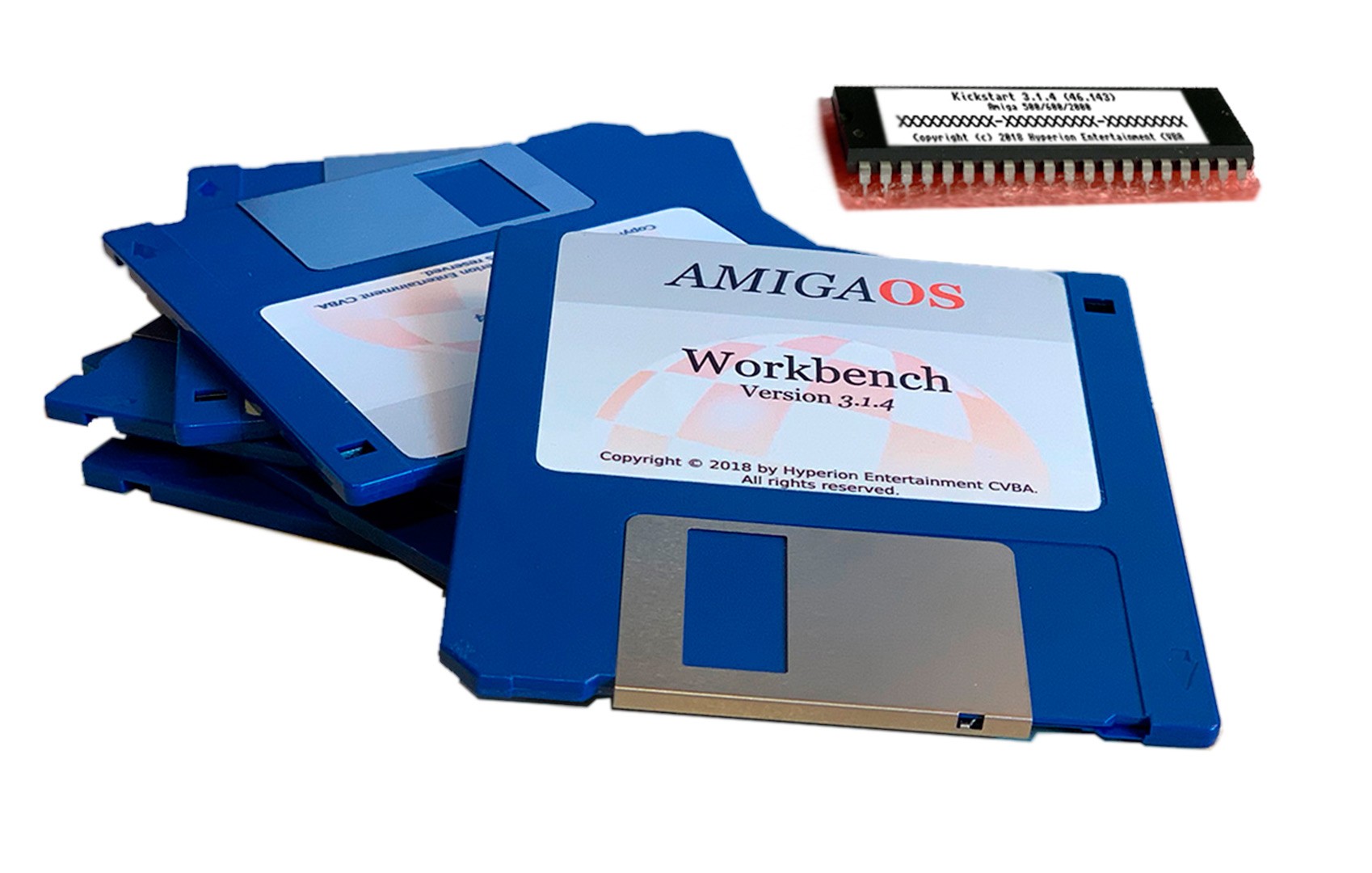

- Amiga os 3.9 floppy mac os x#
- Amiga os 3.9 floppy update#
- Amiga os 3.9 floppy code#
- Amiga os 3.9 floppy Pc#
Its interfaces offer facilities such as command redirection, piping, scripting with This includes file systems, file and directory manipulation, the commandline interface, file redirection, console windows, and so on. Exec provides functionality for multi-tasking, memory allocation, interrupt handling and handling ofĪmigaDOS provides the disk operating system portion of the AmigaOS. Adam Brooks Webber, the programmer responsible for porting TrueBASIC to the Amiga and Macintosh, Byte, September 1986.Įxec is the multi-tasking kernel of AmigaOS. TheĪmiga has an excellent multitasking system, and I think it will have twice the product life of the Macintosh because of it. I can't stress enough what a big contribution it makes to the elegant design of system software. The Macintosh should have had multitasking.
Amiga os 3.9 floppy Pc#
The function of Kickstart is comparable to the BIOS plus the main operating system kernel in IBM PC compatibles.
Amiga os 3.9 floppy code#
Kickstart contains the code needed to boot standard Amiga hardware and many of theĬore components of AmigaOS. Kickstart is the bootstrap firmware, usually stored in ROM. Notably, AmigaOS lacks any built-in memory protection. The CLIĪnd Workbench components share the same privileges. A command-line interface (CLI), called AmigaShell, is also integrated into the system, though it also is entirely window-based. AmigaOS provides an abstraction of theĪmiga's hardware, a disk operating system called AmigaDOS, a windowing system API called Intuition and a desktop file manager called M68K: versions 1.0 through 3.9 PowerPC: versions 4.0 through 4.1ĭefault user interface : Graphical (Workbench)ĪmigaOS is a single-user operating system based on a preemptive multitasking kernel, called Exec.
Amiga os 3.9 floppy update#
Latest release : 4.1 Final Edition Update 1 / Decem20 months ago A PowerPC microprocessor is required for theĬommodore International, Hyperion Entertainment Later versions were deve loped by Haage & Partner (AmigaOS 3.5 andģ.9) and then Hyperion Entertainment (AmigaOS 4.0-4.1). Early versions of AmigaOS required the Motorola 68000 series of 16bit and 32-bit microprocessors. It was developed first by Commodore International and introduced with the launch of the firstĪmiga, the Amiga 1000, in 1985. AmigaOS 3,9AmigaOS is a family of proprietary native operating systems of the Amiga and AmigaOne personalĬomputers.
Amiga os 3.9 floppy mac os x#
Oh, and there's open source VHDL implementations of the whole original Atari ST design.1.AmigaOS 3,9 / AtheOS / Debian 2,2(Potato) / Mac OS 9 / Mac OS X Public BetaĢ. And the Firebee, new hardware which implements the Atari ST/TT platform over the Freescale Coldfire, and while the hardware is expensive the design is open and the VHDL etc in it is open source. And open source desktops, task managers, terminals, etc. On top of that there is MiNT, a Unix-like multitasking OS extension, open source since its creation in the late 80s. While it's not directly from the original Atari sources it is based on the GPL'd sources of the original GEM/GEMDOS from Digital Research and then modified until it is super compatible with the original OS. The Atari ST by contrast has a completely open source operating system stack now in EmuTOS. And so here we have a company owning the OS assets and trying to sell them 20 years later. So there's a bunch of balkanized not-profitable companies creating bizarre ventures and trying to claim the Amiga name or lineage.


In the Amiga community, which is larger and more fanatical in general, it seems like people figure they're going to get rich or famous. Such an amazing contrast between the Amiga and the Atari ST community.


 0 kommentar(er)
0 kommentar(er)
